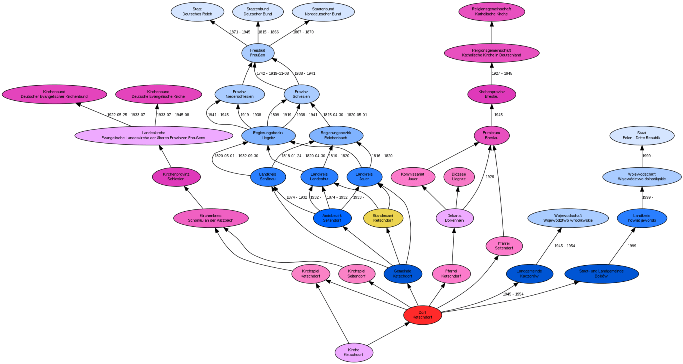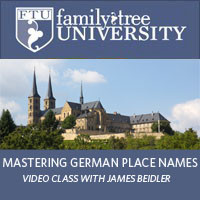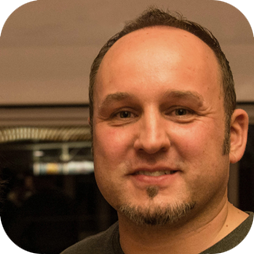by Lisa Cooke | Oct 17, 2018 | 01 What's New, Genealogy Gems Podcast, Listeners & Readers |
The Genealogy Gems Podcast
Episode #222
with Lisa Louise Cooke
Download this episode (mp3)
In honor of Family History Month, Lisa celebrates YOU! This episode is packed with comments, tips and questions from Genealogy Gems fans. Topics range from podcasting to metal detecting, must-use resources and inspiring genealogy discoveries. You’ll also hear from Kirsty Gray at THE Genealogy Show in the UK.
NEWS: INTERNET ARCADE
Internet Archive blog post: Over 1,100 New Arcade Machines Added to the Internet Arcade
Internet Arcade on the Internet Archive
BONUS CONTENT for Genealogy Gems App Users

If you’re listening through the Genealogy Gems app, your bonus content for this episode is a great tip from a fan on an essential resource for those of you with roots in Northern Ireland. The Genealogy Gems app is FREE in Google Play and is only $2.99 for Windows, iPhone and iPad users.
MAILBOX: A PODCAST SKEPTIC?

Gary recommends Genealogy Gems Premium eLearning! Get access to more than 50 Premium Videos and 160 Premium Podcast episodes. It’s the ultimate ongoing genealogy education! Click here to read more about it. Gary mentions becoming a “happy user of” Evernote who now protects his computer with Backblaze cloud back-up service, enjoys using Google Earth for genealogy and learning more about DNA. Click on these links to start exploring for yourself—and to watch a Google Earth video for free.

MAILBOX: CUBAN GENEALOGY PODCAST
Cuban Genealogy Podcast
MAILBOX: METAL DETECTING FOR GENEALOGY
Bureau of Land Management (BLM) and Homestead records
Premium eLearning members also have access to these video tutorials:
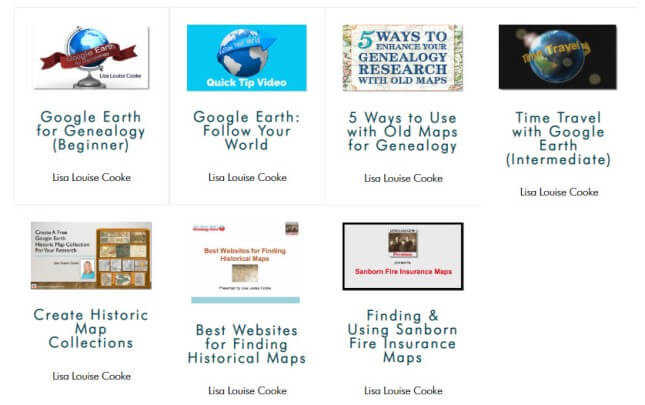
MAILBOX: LOCAL HISTORY BOOK FIND BY ROBIN
Genealogy Gems Podcast episode #220
WorldCat.org

Lisa Louise Cooke uses and recommends RootsMagic family history software. From within RootsMagic, you can search historical records on FamilySearch, Findmypast and MyHeritage.
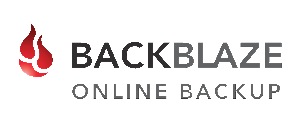
Keep your family history research, photos, tree software files, videos and all other computer files safely backed up with Backblaze, the official cloud-based computer backup system for Lisa Louise Cooke’s Genealogy Gems. Learn more at https://www.backblaze.com/Lisa.
MAILBOX: CORAL’S FRIDAY RECORD DISCOVERY
The Friday record post discoveries appear weekly on the Genealogy Gems website. Subscribe to the free Genealogy Gems newsletter to receive a free weekly email with links to these posts, along with tips, inspiration and money-saving deals.
MAILBOX: VEHICLE REGISTRATIONS
On Florida Memory: Early Auto Registrations, 1905-1917
MAILBOX: GENI.COM QUESTION
Geni.com
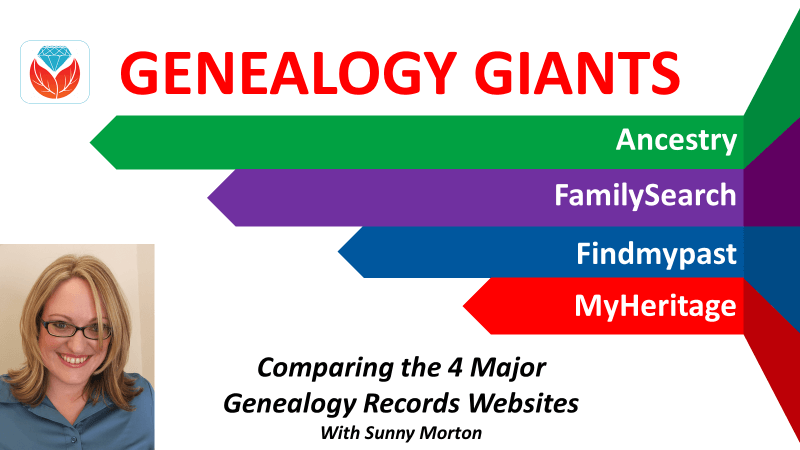
Tip: The Premium eLearning video “Genealogy Giants: The 4 Top Records Websites” explains the difference between individual and collaborative trees.

MyHeritage.com is the place to make connections with relatives overseas, particularly with those who may still live in your ancestral homeland. Click here to see what MyHeritage can do for you: it’s free to get started.
MAILBOX: 3 MILLION GERMAN NAMES
Lisa’s post on German WW1 ancestors
Tim recommends the Onlineprojekt Gefallenendenkmäler
MAILBOX: TRISHA’S INSPIRING JOURNEY
Another Premium eLearning video recommendation (click to see landing page):
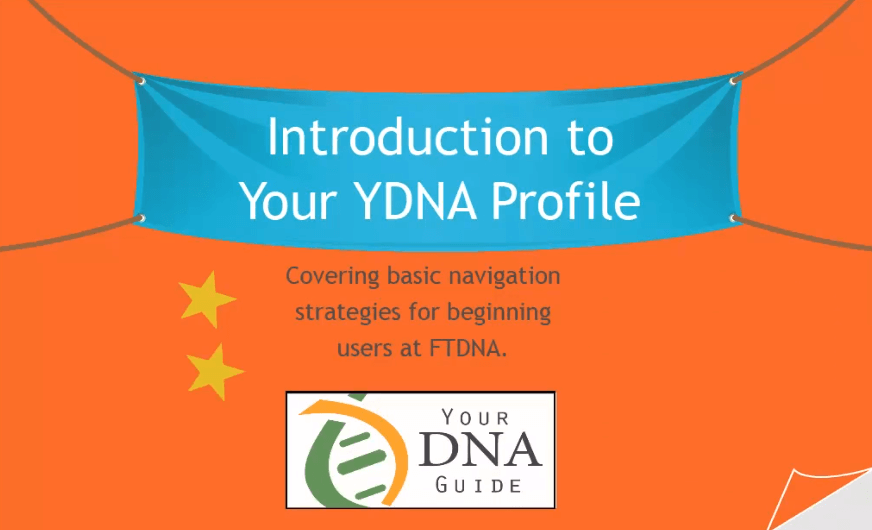
MAILBOX: KIRSTY GRAY
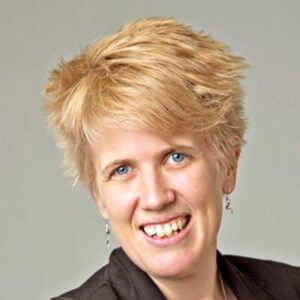
THE Genealogy Show
Kirsty Gray has over 15 years ofresearch experience and has her foot in many genealogical doors around the world. Her first involvement in family history came at the tender age of seven years with her maternal grandfather’s tree in hand. Obsessed with her great-grandmother’s maiden name of Sillifant, Kirsty began a surname study on the name in 1999, publishing tri-annual journals on the surname for more than ten years. Founder member and Chair (now Secretary) of the Society for One-Place Studies, Kirsty has two places registered, on the Devon/Cornwall border and is considering another study of a hamlet in Cornwall. In November 2014, Kirsty founded The Surname Society with five other genealogists across the globe and the membership is already close to 500!
PROFILE AMERICA: HOME MAKING
PRODUCTION CREDITS
Lisa Louise Cooke, Host and Producer
Sunny Morton, Contributing Editor
Hannah Fullerton, Production Assistant
Lacey Cooke, Service Manager
Disclosure: This page contains affiliate links and Genealogy Gems will be compensated if you make a purchase after clicking on these links (at no additional cost to you). Thank you for supporting this free podcast and blog!
Download the show notes
by Lisa Cooke | Sep 12, 2018 | 01 What's New, Genealogy Gems Podcast |
The Genealogy Gems Podcast
Episode #221
with Lisa Louise Cooke
Download this episode here
Live from FGS 2018!
Lisa chats with a podcast listener, talks about vital records with Shannon Combs-Bennett and welcomes a drop-by guest, Daniel Horowitz of MyHeritage.com.
Episode highlights:
- Fantastic news from RootsTech;
- A great new resource from Library & Archives Canada;
- An update from Your DNA Guide Diahan Southard on MyHeritage DNA tools;
- The long-awaited conclusion of Project Lizzie.
LIVE FROM FGS!
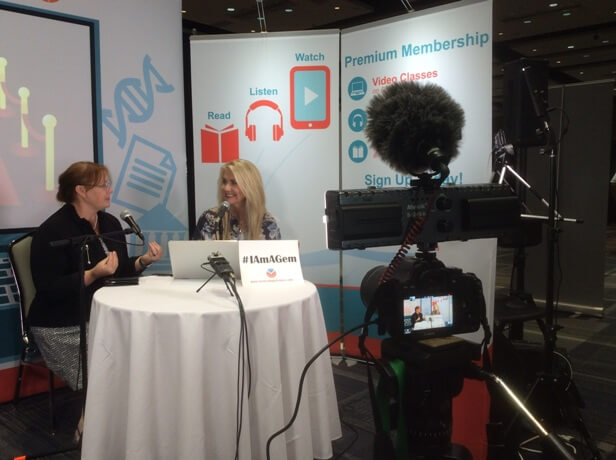
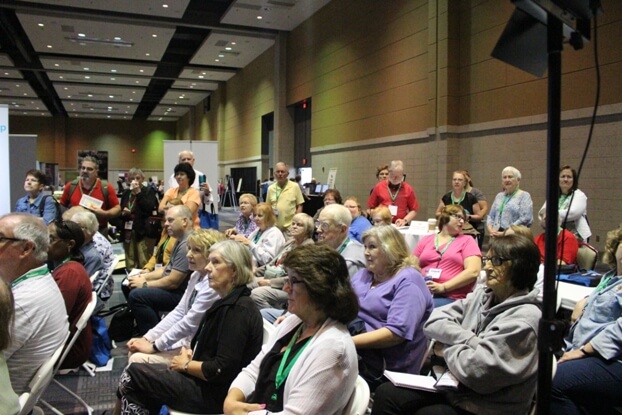
Lisa records the podcast in the exhibit hall with guest Shannon Combs-Bennett and a live studio audience
LIVE MAILBOX: Chatting with Jeannette
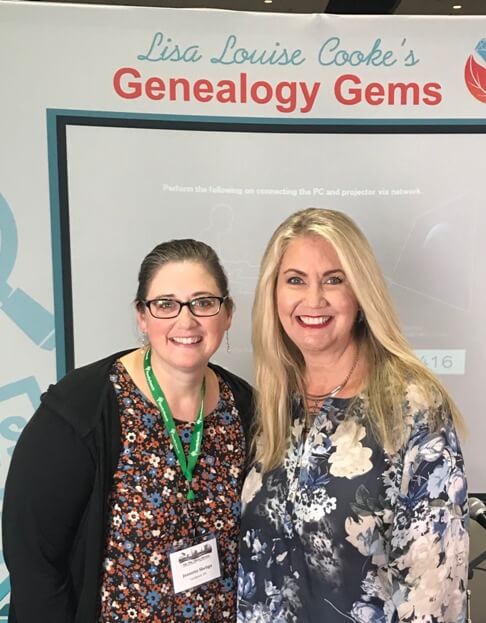
Jeannette from Niagara County Genealogical Society, shown here (left) with Lisa
The FGS conference supports the missions and activities of genealogical societies. Learn more about FGS and find a genealogical society near you here.
Genealogy Gems supports societies, too! Society memberships and reprintable articles for your newsletters. Go to the Societies dropdown menu on GenealogyGems.com:

If your society is interested in hosting Lisa Louise Cooke for a seminar, go to the Seminars tab and click Book Lisa.
INTERVIEW: Shannon Combs-Bennett on Vital Records
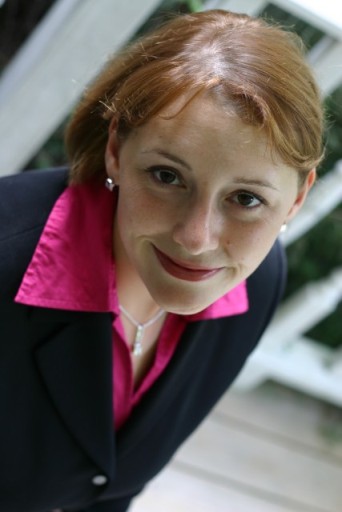
Learn more about using vital records in your research in the free Genealogy: Family History Made Easy Podcast, episode 4.
INTERVIEW: Daniel Horowitz, MyHeritage

As MyHeritage’s Genealogy Expert, Daniel Horowitz provides key contributions in the product development, customer support and public affairs areas. He holds board level positions at the Israel Genealogy Research Association (IGRA) and the International Association of Jewish Genealogical Societies (IAJGS) among others. Daniel served as teacher and study guide editor for 15 years for the family history project “Searching for My Roots” in Venezuela.
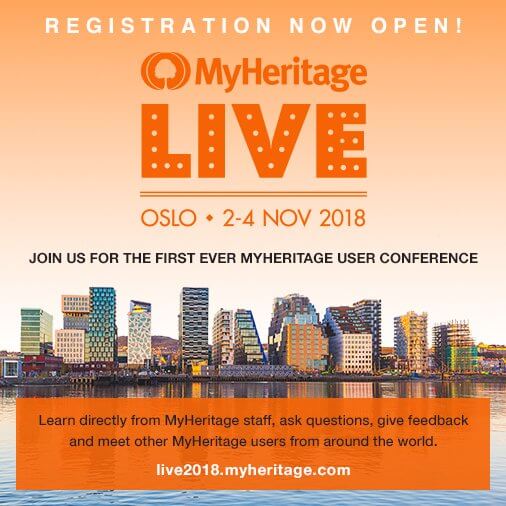
Who: Daniel Horowitz, Lisa Louise Cooke and MORE great presenters!
What: MyHeritage LIVE
Where: Oslo, Norway at the Radisson Blu Scandinavia hotel
When: November 2-4, 2018
It’s open to anyone who would like to learn more about MyHeritage – including subscribers, DNA customers, those with free basic accounts, and those who haven’t used MyHeritage yet but would like to find out more.
Tickets include entry to the Friday night reception, keynote speeches, all conference sessions, lunch and coffee breaks on Saturday and Sunday and entry to the exclusive MyHeritage LIVE party on Saturday night. Now through September 24, register for Early Bird discount price of €75.00. MyHeritage.com is the place to make connections with relatives overseas, particularly with those who may still live in your ancestral homeland. Click here to see what MyHeritage can do for you: it’s free to get started.

MyHeritage.com is the place to make connections with relatives overseas, particularly with those who may still live in your ancestral homeland. Visit www.MyHeritage.com
Subscribe to the free Genealogy Gems newsletter
to receive a free weekly email with tips, inspiration and money-saving deals. Click here to subscribe!
LIVE MAILBOX: Adrianne Keeps Connected with the Podcast
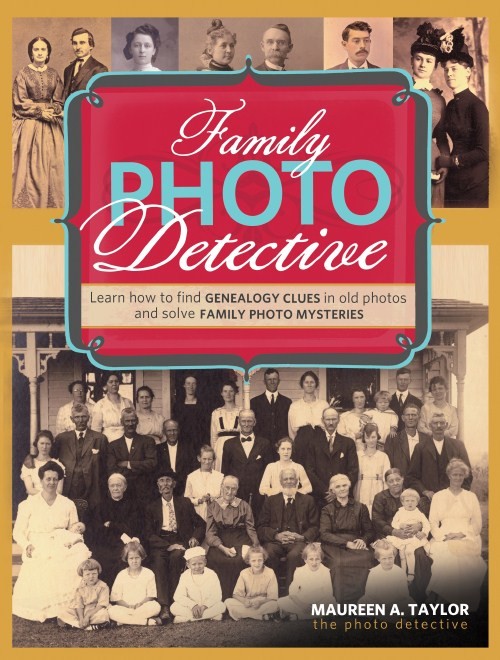
How to identify old cars in photographs
Savvy tips for identifying old photos: An Australian family on holiday in England
Genealogy Gems Premium members may also listen to an interview with Maureen Taylor, The Photo Detective, in Premium Podcast episode 141. She’s the author of Family Photo Detective, a must-have resource for identifying old photographs.
BONUS CONTENT for Genealogy Gems App Users

Get the app here
If you’re listening through the Genealogy Gems app, your bonus content for this episode is a short but inspiring story from someone who came to one of my classes and then went and found something cool on YouTube relating to her family’s employment with airline TWA….Don’t miss it! The Genealogy Gems app is FREE in Google Play and is only $2.99 for Windows, iPhone and iPad users.

Lisa Louise Cooke uses and recommends RootsMagic family history software. From within RootsMagic, you can search historical records on FamilySearch.org, Findmypast.com and MyHeritage.com.

Keep your family history research, photos, tree software files, videos and all other computer files safely backed up with Backblaze, the official cloud-based computer backup system for Lisa Louise Cooke’s Genealogy Gems. Learn more at https://www.backblaze.com/Lisa.
NEWS: RootsTech Goes to London
RootsTech will host an event in London from 24–26 October 2019 at the ExCeL London Convention Centre. Registration opens in February 2019. Find out more about RootsTech London 2019 at https://www.rootstech.org/London.
NEWS: The “Unconference” Experience
REGISTER TODAY: Genealogy Roots: The “Un-Conference Experience”
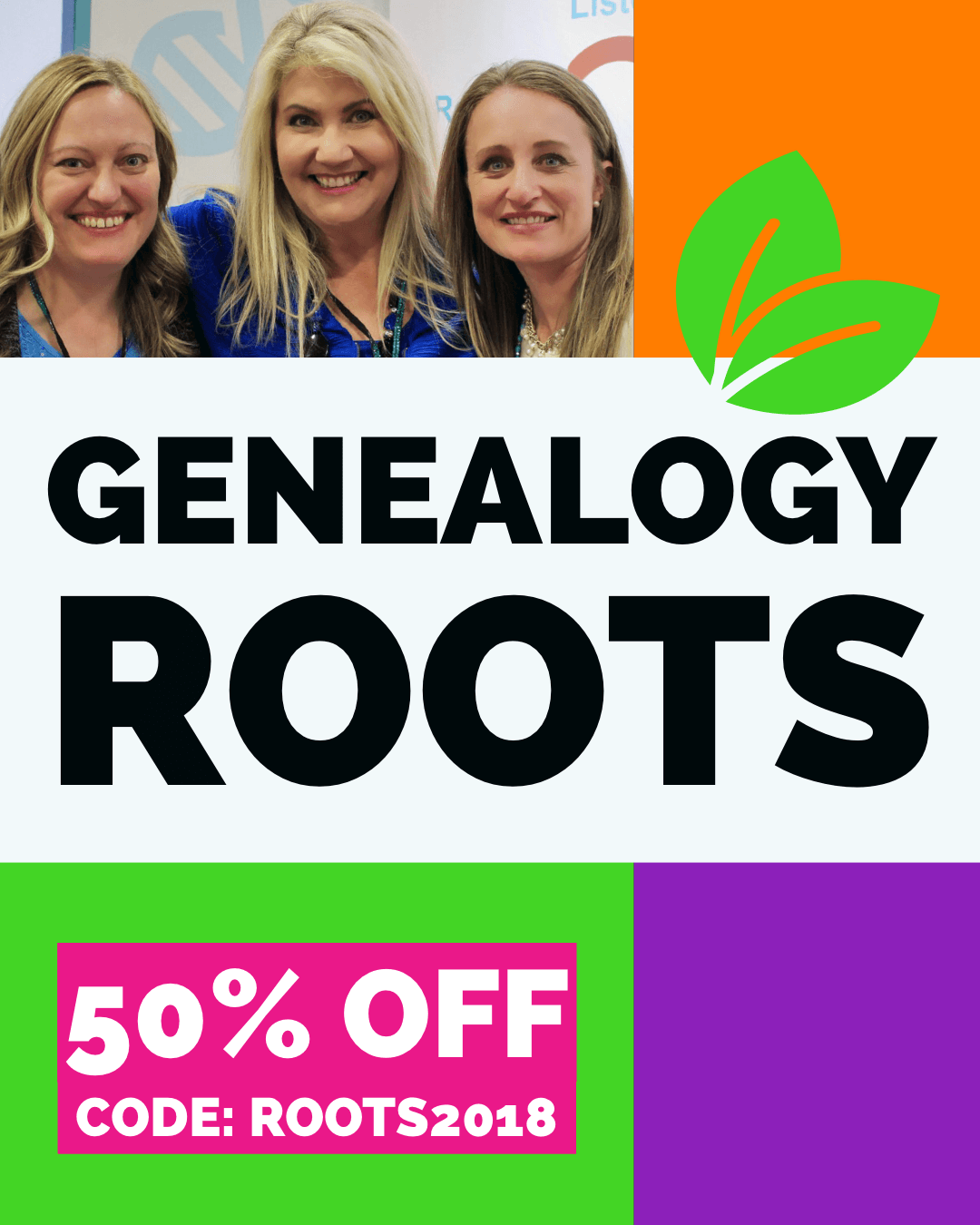
Lisa Louise Cooke, Diahan Southard, and Sunny Morton will share a stage on October 4-5, 2018 at the SeniorExpo in Sandy, Utah. (Psst: You don’t have to be a senior to attend!) Here’s the scoop—and a special registration discount!
Who: Lisa Louise Cooke, Diahan Southard, and Sunny Morton
What: Genealogy Roots: The Un-Conference Experience! at SeniorExpo
Where: Mountain America Expo Center (South Towne Expo Center), 9081 S. State St., Sandy, Utah
When: October 4-5, 2018, 9:00 am – 5:00 pm
THE ARCHIVE LADY: Library Archives Canada Co-Lab
The Library and Archives of Canada (LAC) has introduced a brand-new crowdsourcing opportunity for genealogists or anyone interested in records transcription: Co-Lab.

The LAC has put a call out for volunteers to be part of a collaborative project to transcribe, add keywords and image tags, translate content from an image or document and add descriptions to digitized images using “Co-Lab” and the new “Collection Search”. The more volunteers that participate in this project, the more accessible and usable the digital collection will become for everyone.
You can become a contributor in two ways:
Take on a “challenge” of images put together by experts at LAC
Use the new Collection Search to find materials that matter most to you, then enhance them. Anyone can now contribute to digitized images that are found while doing research.
The volunteer must register and create a user account so you can keep track of the records to which you have contributed. Once this free account is established, a volunteer can contribute as much or as little as they would like.
The “Challenges” are content put together under a theme. For instance, under the “Challenges” tab on the website you could choose to transcribe the “Correspondence between Sir Robert Borden and Sir Sam Hughes” The theme for this challenge is listed as “military heritage.”

Or another “Challenge” someone might choose could be “New France and Indigenous Relations” whose theme is listed as “Aboriginal Heritage.”

There are also new “Challenges” being posted to the site, so check back often.
Maybe you would like to contribute using Collection Search. The website describes how this tool works: “When you are conducting research using our new search tool and find images, you’ll see that you have the option to enable this image for Co-Lab contributions. After answering just a few short questions, you can enable an image found in Collection Search for Co-Lab use and transcribe/translate/tag/describe to your heart’s content.”
There is a short tutorial to get you started and show you the ropes. The launch of Co-Lab also introduces a new image viewer, which allows you to zoom in on different parts of the image or move around the image itself. This tool is useful when transcribing or adding keywords and image tags to describe all the small details. Every image in Co-Lab is subject to review by other members. If something is found to be incorrect or if you find something that is wrong, it can be marked as “Needs Review” for others to take another look and decide what is correct.
The best part about this new Library and Archives Canada tool is that every contribution by the volunteers benefits fellow genealogy researchers and improves records access. Every additional tag or translation becomes new metadata and is searchable within 24 hours of the transcriptions or tagging being done.
So, if you are like me and are eager to get as much genealogical and historical records online and transcribed, check into The Library and Archives of Canada’s new Co-Lab and Collection Search!
DNA: Improvements to MyHeritage DNA
with Diahan Southard, Your DNA Guide

Improvements to MyHeritage DNA
GEM: The Conclusion to Project Lizzie
Click here to read Ron’s blog post announcing the satisfying conclusion of Project Lizzie. To learn more about Ron, stop over at storyhow.com, where Ron teaches business people how to tell stories.
PROFILE AMERICA: Picture This
PRODUCTION CREDITS
- Lisa Louise Cooke, Host and Producer
- Sunny Morton, Contributing Editor
- Diahan Southard, Your DNA Guide, Content Contributor
- Melissa Barker, The Archive Lady, Content Contributor
- Hannah Fullerton, Production Assistant
- Lacey Cooke, Service Manager
Download the show notes
Disclosure: This page contains affiliate links and Genealogy Gems will be compensated if you make a purchase after clicking on these links (at no additional cost to you). Thank you for supporting this free podcast and blog!
by Lisa Cooke | Aug 8, 2018 | 01 What's New, Military |
If one of your ancestors served in the United States Merchant Marine, then you’ll be especially interested in the conversation that our recent blog post on the topic of the Merchant Marine has generated about the records that may be available for your genealogy research.

Captain and crew of a new Liberty Ship SS Booker T. Washington just after it completed its maiden voyage to England. (L-R) C. Lastic, Second Mate; T. J. Young, Midshipman; E. B. Hlubik, Midshipman; C. Blackman, Radio Operator; T. A. Smith, Chief Engineer; Hugh Mulzac, Captain of the ship; Adolphus Fokes, Chief Mate; Lt. H. Kruley; E. P. Rutland, Second Engineer; and H. E. Larson, Third Engineer.” Captain Hugh Mulzac is fourth from the left on the first row. February 8, 1943.
The article was on how to find military service records. Military Minutes contributor Michael Strauss made this comment about the United States Merchant Marine:
“Although not officially a branch of the military, the Merchant Marines sacrificed and lost lives since the days of the Revolutionary War, carrying out their missions of supply and logistics during times of war.”
A reader named Steve endorsed that brief remark in the article’s comments section, and expressed a desire to hear more on the Merchant Marine. He says:
“Although not considered to be a military arm of the United States, the Merchant Marines were an integral part of the war efforts in WWI and WWII and should be considered in genealogy. Many lives were lost in service of USA.”
Merchant Marine in Newspapers and Death Records
In a beautiful expression of genealogy serendipity, a Genealogy Gems Premium Podcast listener has written in with a specific question about researching relatives in the Merchant Marine. Vicki writes:
“I have a distant relative who was a Merchant Marine during WWII. Raymond Ralph Burkholder was a Merchant Marine Able Seaman killed when his ship the Standard Oil tanker W. L. Steed was torpedoed by a German sub off New Jersey Feb. 2, 1942. Following is a newspaper article about the incident:”
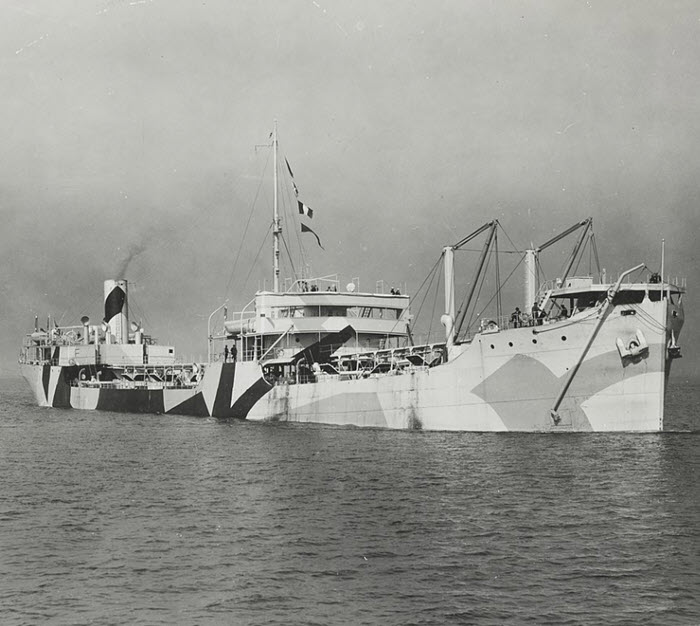
SS W. L. Steed (public domain image)
Vicki sent the following article from the Lebanon Daily News, Thursday, February 12, 1942:
NAZI SUBS BOOST TOLL OF SHIPS SUNK TO 25
New York, Today – (AP) The toll of ships officially announced as sunk or attacked off the United States and Canada thus far in the war stood today at 25, after the navy reported the 6,182-ton Standard Oil tanker W. L. Steed was sent to the bottom by an enemy submarine off New Jersey Feb. 2.
The announcement of the W. L. Steed’s fate was made yesterday with the arrival of three survivors, who had been picked up semi-conscious after drifting for two icy days in an open boat. No word has come from the remainder of the crew of 38 as three of the tanker’s four lifeboats still are missing.
A Williamsport, Pa., man was listed as a member of the crew. He is Raymond R. Burkholder, able seaman.
Able-bodied seaman Louis Bartz, 38, of Philadelphia, and Ralph Mazzucco, 23, and Joaquim R. Vrea, 39, both of New York, said the submarine torpedoed the tanker at 12:45 p. m. and that after the crew got off in lifeboats the enemy craft fired 17 shells into the sinking ship.
Last night the third naval district reported that a South American steamship sighted a lifeboat containing a number of bodies off the Atlantic coast yesterday, but was forced to flee when a submarine popped up in the vicinity.”
Vicki’s question is this: Where do you think I would look for a death certificate? New Jersey?
Before we jump into answering that questions, let’s learn more about Merchant Marines so we better understand where to search.
About the U.S. Merchant Marines
The Merchant Marine actually served in a military capacity before the U.S. Navy OR the Coast Guard ever existed.
According to the website, American Merchant Marine at War, the Merchant Marine can trace its history to 1775, when “a party of Maine mariners, armed with pitchforks and axes, inspired by the news of the recent victory at Lexington, Massachusetts, used an unarmed lumber schooner to surprise and capture a fully armed British warship, HMS Margaretta, off the coast of Machias, Maine. The men used the captured guns and ammunition from the ship to bring in additional British ships as prizes. American privateers soon disrupted British shipping all along the Atlantic coast.”
The Revenue Cutter Service, the forerunner of the Coast Guard, wasn’t founded until 15 years later, in 1790, to prevent smuggling.
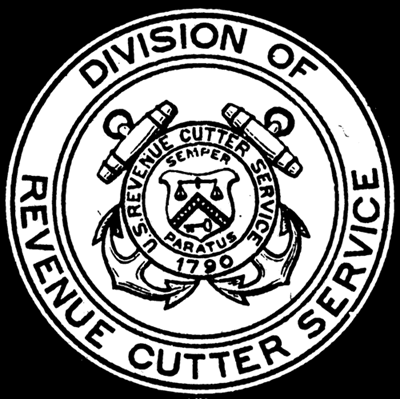
Seal of the U S Revenue Cutter Service
There was a Continental Navy in 1775, but it ended with the Revolutionary War. The US Navy didn’t come into being until 1797.
The Merchant Marine, as an umbrella term, refers to a body of civilian mariners and government-owned merchant vessels: those who typically run commercial shipping in and out of the country. During wartime, merchant mariners can be called on by the Navy for military transport.
And that’s what happened during World War II. Our Military Minutes contributor, Michael Strauss, says that “On February 28, 1942 President Franklin D. Roosevelt authorized the transfer (Under Executive Order #9083) of all maritime agencies to the United States Coast Guard. This order was a redistribution of maritime functions and included the United States Merchant Marine.”

Training Officers of the Merchant Marine on the Government Training Ship at New Bedford, Mass. Making an afternoon time sight (NARA, Public Domain)
Where to Look First for Merchant Marine Information
According to the American Merchant Marine at War website, over 1500 merchant ships were sunk during the War, and hundreds of others were damaged by enemy attacks and mines. That brings us to Vicki’s question about her relative.
As I discuss in my Premium eLearning video class Google Books: The Tool I Use Every Day, Google Books is a treasure trove of genealogical information.
A search of Standard Oil tanker W. L. Steed “Burkholder” in Google Books leads to the book Ships of the Esso Fleet in World War II (Standard Oil Company, 1946).
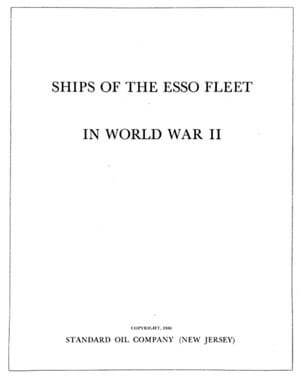
A genealogy gem found at Google Books!
This book is an invaluable resource that actually provides a detailed, eyewitness account of Raymond Ralph Burkholder’s final acts on the ship before having to abandon it. It even details his last torturous hours in the lifeboat before he became delirious and died, only hours before the other survivors were rescued!
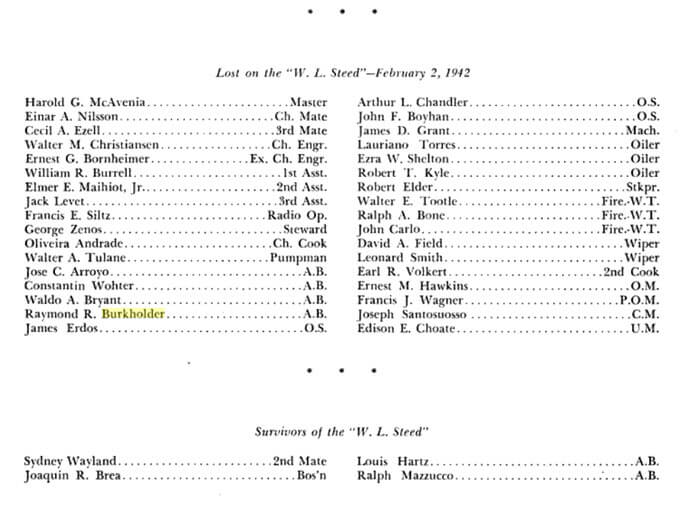
In Search of Raymond Burkholder’s Death Record
Here’s where I put my head together with Michael. I suggested checking the death certificates of the county of his last residence, which may now be held at the state level. He liked that idea and said it’s worth the effort.
From what I’ve learned, the Master of the vessel would have reported the deaths of his crew to the vessel owners, who would have reported to the Coast Guard, and I asked Michael whether following Coast Guard records through the International Organization of Masters, Mates & Pilots would be a good route to a death record for Raymond.
He said that instead, he would go directly to the Records of the Merchant Marines. Michael writes that these records during World War II “can be somewhat confusing, but not impossible to search. The records for your sailor during the war can be located at several different locations.”
Even if you don’t have relatives who served in the Merchant Marine, keep reading because you may get some ideas about records to discover for other family members who may have served in the military in other capacities.
6 Places to Look for Merchant Marine Records for WWII:
Where can you find Merchant Marine records for World War II? Here are six excellent places to look.
#1: Official Military Personnel Files
Official Military Personnel Files (known as OMPFs) are maintained by the National Personnel Record Center in St. Louis, MO. Since these records are considered Archival 62 years after the date of separation, these are open for Merchant Mariners and others who served during World War II who were discharged by the end of the war. Click here to learn more about ordering OMPFs.
Michael adds this note:
“You can also access the files by mailing in (Standard Form #180, downloadable here), and fill in the information requested about your Mariner. Note that the service record is likely to be under the heading of the United States Coast Guard when filling out the form—check that box. Don’t send any money; the Archives will notify you if the file is located.”
#2: Individual Deceased Personnel Files
If your Merchant Mariner was killed during World War II, request the Individual Deceased Personnel File (IDPF). This file is separate from the OMPF file and is also at the National Personnel Record Center.
Michael says, “These files are a wealth of genealogical information about veterans who died during World War II and other war periods. Contact the Archives to request this file. If the file is not in their custody, it is possible it is still in the hands of the Army Human Resource Command located at Ft. Knox, KY. The Archives will let you know the exact location.”
#3: National Maritime Center in Martinsburg, WV
The National Maritime Center website has links to records, forms, and general info. Request records with this downloadable form.
#4: National Archives Collections on Merchant Mariners
You will find Merchant Mariners collections at the National Archives cataloged under the records of the United States Coast Guard, Record Group 26.
This collection has 8 boxes of material containing details on Merchant Mariners killed, wounded, and those missing in action as a result of combat during World War II. Other records pertain to medals and other citations, court martials, and miscellaneous records.
#5: Ship Log Books
If you know the name of the vessel that the Merchant Mariner served on, then try a search for the logbooks.
Logs can name assignments for crew members, among other log entries of the day to day activities of the ship. The National Archives website has finding aids for log books.
A Google search for NARA U.S. merchant seaman finds several excellent National Archives resource pages there, including some for Ship’s Logs.
#6: Officer Applications
United States Merchant Marine applications for the licensing of Officers, 1914-1949 is available on Ancestry.com. This collection covers both World Wars. These document applicants who applied to be commissioned officers with the Merchant Marines, including men designated as Masters, Pilots, Engineers, or Vessel Operators.
Related collection: Lists of Merchant Seamen Lost in WWI, 1914-1919.
Crossing the Bar
During my research of the U.S. Merchant Marine for this article, I came across the phrase, “crossing the bar.” You may have heard this yourself. It refers to the death of a mariner.
The history behind this phrase: a sandbar can be found at the entrance of many rivers and bays, and crossing the bar has come to mean leaving the safety of a harbor for the unknown.
I wish all of you in search of your ancestors who crossed the bar good fortune in your genealogical pursuit.
Podcast Episode Featuring Merchant Marine Records
You can hear more about Merchant Marine records in Genealogy Gems Premium Podcast Episode #159. (Subscription required.)

























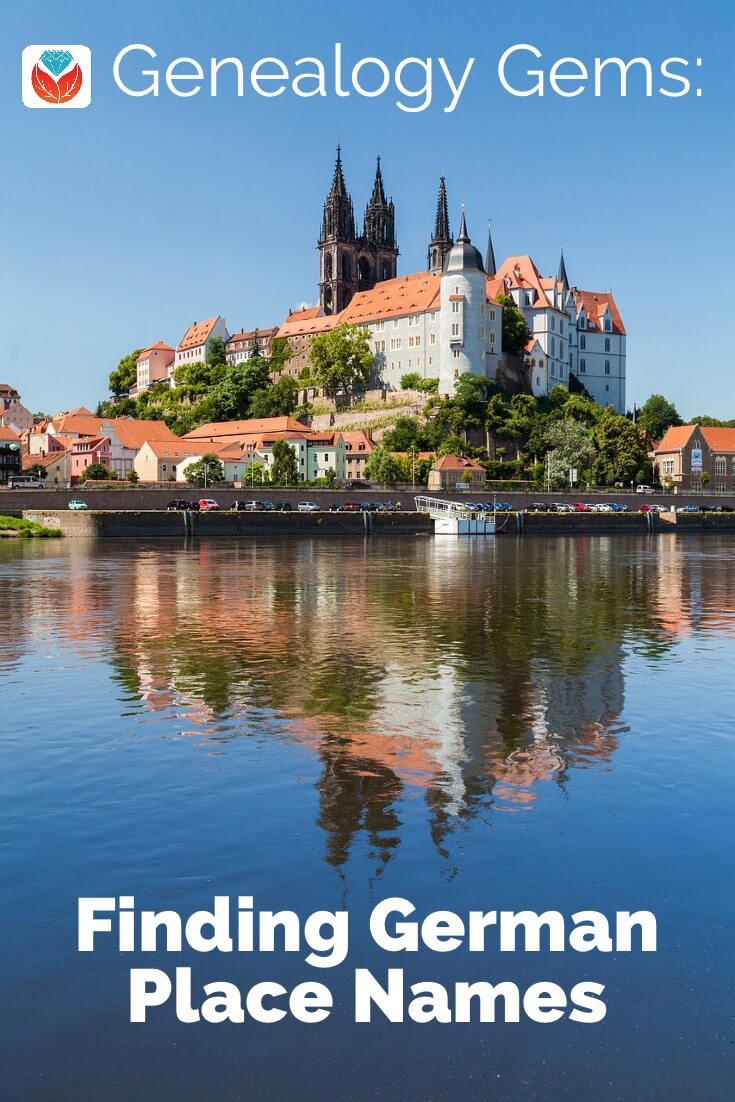 German place names have changed dramatically over time, so it can be challenging to identify your German ancestors’ place of origin. This free online tool helps family historians navigate changes in German place names, jurisdictions, and boundaries.
German place names have changed dramatically over time, so it can be challenging to identify your German ancestors’ place of origin. This free online tool helps family historians navigate changes in German place names, jurisdictions, and boundaries.